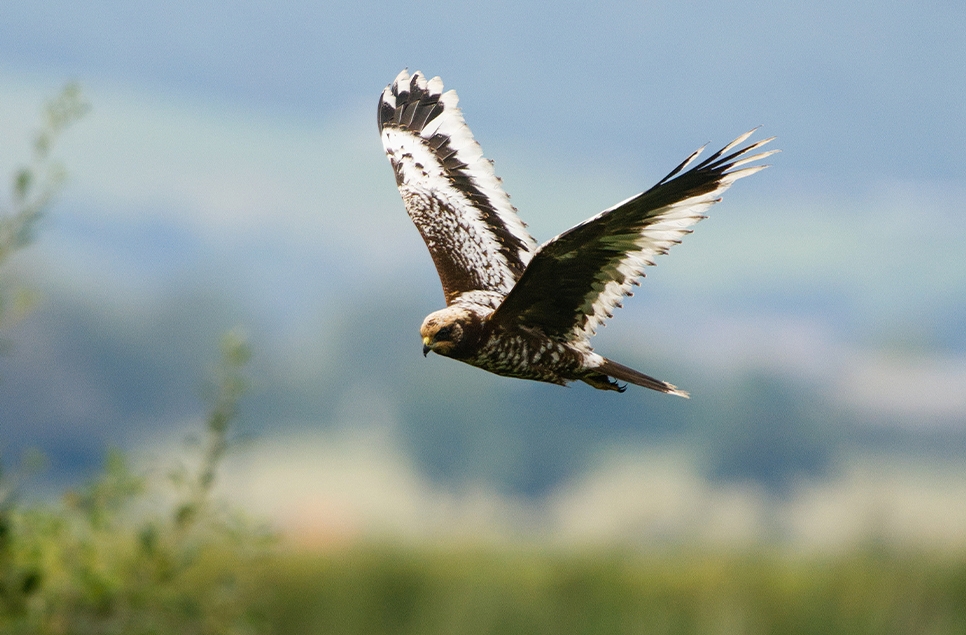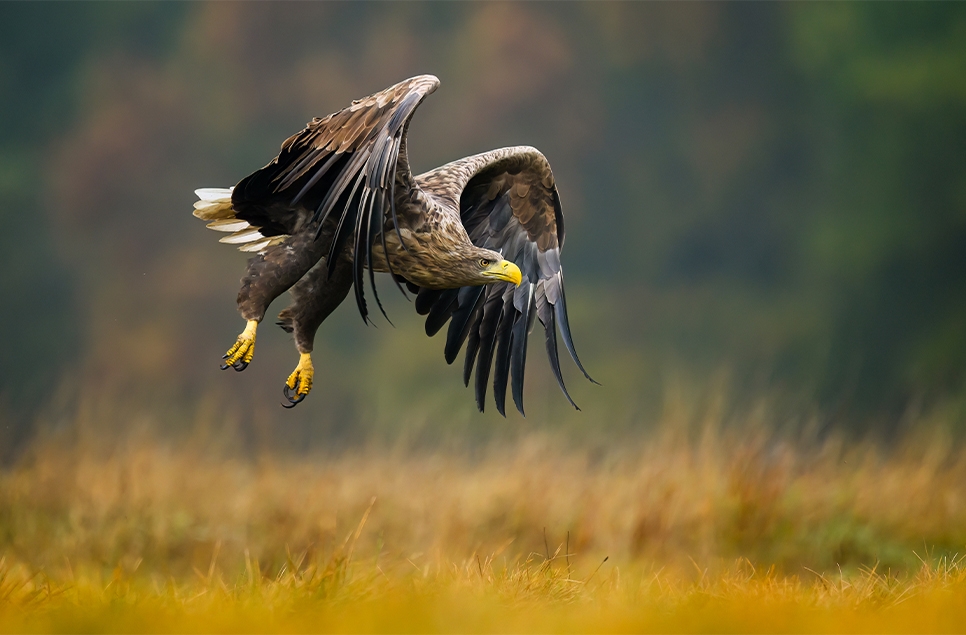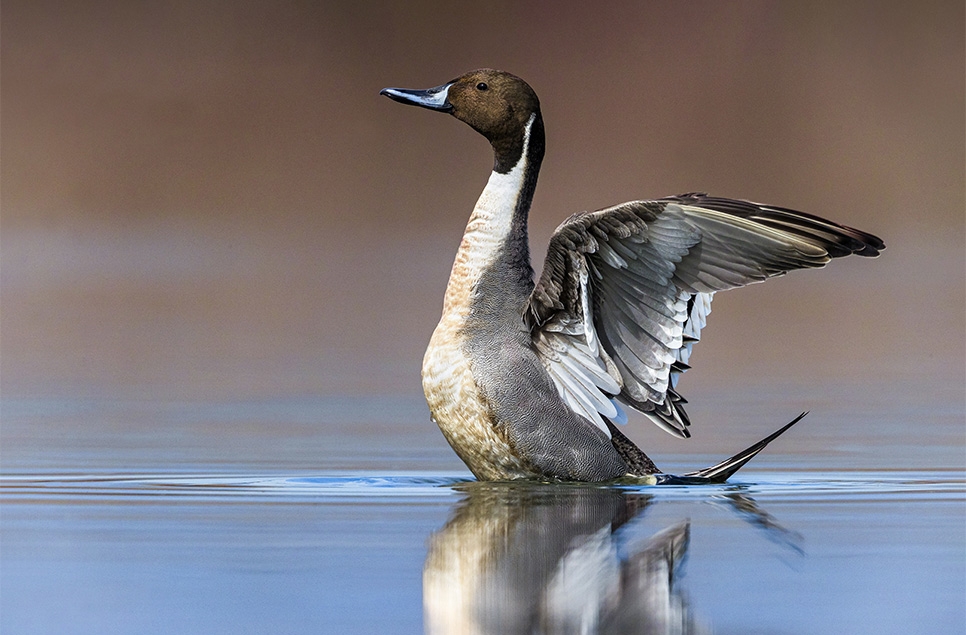Wildlife on Lockdown: keeping WWT nature reserves going
Even though business as usual has ground to a halt, spring wildlife across our sites is in full swing. Emma Hutchins, our Head of Reserves, shares the challenges of continuing under lockdown conditions.
I hope you and your families are all keeping well in these difficult times. Like many people I’ve been working from home for the last few weeks now, supporting my colleagues in the Reserve Teams across our sites, but I’m missing being out and about. So when I was asked as Head of Reserves, if I could provide an update to our supporters I jumped at the chance. It’s a great opportunity to reflect on all the positive things that are still happening, even though sadly we’re unable to visit our sites.
Like many organisations we have had to make some tough decisions about what work is essential and how many people we can have working at this time. So small but dedicated teams remain at our sites including at least one person to ensure essential work on our reserves is undertaken.
As per normal at this time of year we are taking stock after the winter. Many of our sites will have experienced strong winds and high water levels, leaving us with fencing and infrastructure repairs to make in preparation for the months ahead.
In some ways it could have been much worse as the timing of the lockdown was such that our sites were generally prepared for the spring and summer. Those hectic autumn days of cutting, strimming and clearing, and then the post Christmas catching up with any remaining coppicing, tree felling and hedge work has really paid off and our sites are ready for the switch around of wildlife. Out with the wintering visitors and in with the breeding species - some will be making epic journeys while for others it’s wake-up time as they’ve either slept their way through winter or remained fairly elusive!

Key activities for this time of year are checking on the operation of pumps, which are crucial for managing the water levels across our sites. Fortunately checking pumps is something that can be done alone or doesn't bring staff into close contact with each other. And also, our most important conservation team of the summer - our livestock - don't need to heed social distancing guidelines.
We’re also preparing for the arrival of livestock from their winter quarters or preparing to move animals from higher drier areas to more sensitive areas of the reserve. Grazing is very important for us in the spring and summer. We graze with a mixture of animals as they all have different impacts due to their feeding methods and size.

Wherever possible we use hardy stock. These are often more traditional breeds that are better at coping with being outdoors, in any weather and aren’t fussy eaters, happy to feed on mixed swards with tougher grass and rushes in the mix. The majority of our grazing is with cattle but we also use sheep and horses too. At Martin Mere we have our own herd of longhorn cattle which we breed from each year. This year we expect around 24 calves, the first of which was born a few days ago.

We’ve had to scale back monitoring on our sites as we’re needing to be careful with money, but the great thing about working outdoors is that the wildlife hasn’t had the message about social distancing so it’s out and about making itself known. Our reserve staff are still making a note of what they are seeing and even though each season has its arrivals, there’s something particularly special about signs of spring. We’re also lucky that on some of our sites where public access remains, some of the local volunteer wildlife surveyors can continue and are incorporating their recordings into their daily dose of exercise from their homes, as permitted under the lockdown conditions.
These are some of our top wildlife picks so far…
Once we start getting the first warm days in March we can’t help but start peeking under our reptile “tins”. These are sometimes actual pieces of corrugated tin, but roofing felt and carpet squares are used too. Located around the reserve these “reptile refugia” are exactly that, a secure place for reptiles to come and bask so that they can warm up and become properly active. The grass snakes and slow worms in particular like to curl up under the safety of the refugia in the mornings before moving off to hunt and find mates.

We’re seeing the first of the pretty pale pink cuckoo flowers appear, which along with hedge garlic, is one of the key food plants for the very striking and widespread orange tip butterfly. If, like me, you have unkempt areas in your garden or local area, it’s worth looking out for this pretty butterfly and its tiny orange eggs that will be laid on the underside of the plant’s leaves. Hedge garlic is very common and often considered a garden weed, you may know it as Jack by the Hedge, Garlic Mustard, Poor Man’s Mustard or Penny Hedge, if you rub it’s leaves it smells garlicky!

The ducks and waders are busy across our sites pairing up and settling down. Lapwings are already sitting tight on nests, with numbers seemingly similar to previous years. We also have redshank and oystercatchers pairing up (not with each other!) and curlew and black-tailed godwits nest scraping. The ducks are active too with pochard, shovelar, teal and gadwall all getting ready to breed, while mallards and some of the geese are already parading their own bundles of joy around.

The chorus of breeding bird song is all around and even more penetrating than normal it seems, especially in our hedges and reedbeds as Cetti’s warblers, chiffchaffs, sedge warblers, bullfinches and many others announce their presence and intentions. The heronry hedge at Washington is already busy with new arrivals. While some of the pairs of cranes at Slimbridge are already being more secretive, a good indication that they may be nesting too.
Unable to get to our sites to make observations, I’ve been taking advantage of the wildlife cameras that are available online and spent a lovely evening last week with my son waiting for badgers to appear on the Caerlaverock webcam. We were not disappointed as one then two then three badgers all foraged and played in front of the camera.
What is clear from our observations is that although conservation work is being disrupted, nature isn’t yet noticing our lack of intervention. In fact across the countryside the reduced disturbance to wildlife seems to be having a beneficial effect. It’s going to be fascinating to see how this year in particular develops and how the wildlife cope. Later in the year the wildlife will depend on us to be active again, but for the moment at least we can take comfort in the fact that grazing animals will be taking care of much of the essential maintenance work.
Hoping you all stay safe and well, and we look forward to providing more updates from the reserve team soon.
By Emma Hutchins, Head of Reserves at WWT
Reserved for nature
Our wetland sites underpin our conservation work. We create and maintain thousands of hectares of wetland habitat at our nature reserves, to support and protect biodiversity.
Find out more

